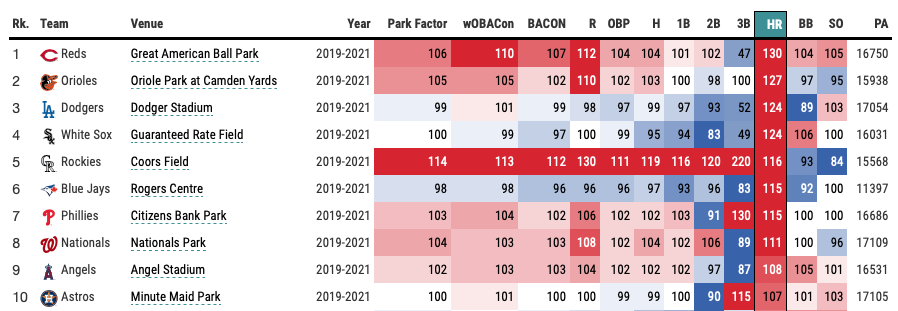Commercial airline travel is never quite as smooth as we’d like it to be. You get your bags packed, get to the airport – likely earlier than needed – only to encounter crowds of people and long lines to contend with. Then you get through security slowly, more lines, more waiting around, then finally you make your way to the gate (after grabbing some pretzel bites from Auntie Anne’s). Likely more waiting at the gate prior to boarding which is even more so of a struggle when traveling with small children.
Once finally on board the plane, you get settled into your seat, stow away your carry-on bags, and hope for no delays before eventually the much-anticipated takeoff. It’s at this point, as long as you aren’t fearful of flying or heights, you can finally relax. Put the movie on, pop the headphones in, grab a pillow, dive into your book, get busy on the laptop, pull out some toys, games, or snacks for children – whatever gets you through the flight. But it’s at this moment that you can feel the payoff of the somewhat burdensome previous few hours.
In fantasy baseball, often times drafting a highly-touted prospect is a little like the airport experience. It’s generally more expensive than you would have hoped for (drafting top prospects usually is). And then there are generally a few bumps in the road at the beginning, some early frustrations, more waiting around than was anticipated, before hopefully, finally, arriving at the planned destination. Even Mike Trout struggled in his initial stent at the major league level (.220 AVG in his first 40 games in 2011). Very rarely do rookies hit the ground running as they adjust to the big leagues.
But there is a clear reason for fantasy managers wanting to draft highly-touted prospects: they have a pedigree, a proven track record of excellence, and they often turn out to be the next wave of fantasy superstars.
Take for instance the consensus Top 11 fantasy players heading into 2022. Fernando Tatís, Jr., Trea Turner, Juan Soto, Vladimir Guerrero, Jr., José Ramírez, Bo Bichette, Gerrit Cole, Bryce Harper, Ronald Acuña, Jr., Mookie Betts, and Mike Trout.
Tatís, Jr., Guerrero, Jr., Acuña, Jr, Trout, and Harper were five of the most hyped prospects in all of baseball over the past decade. Turner, Soto, and Bichette were all very highly regarded as well. Cole was the #1 overall pick in the 2011 MLB Draft one year after Harper was the #1 overall pick in 2010.
With that said, most players – even the ultra-talented ones – require an adjustment period, a learning curve, once they debut in The Show.
Which brings us to Luis Robert.
Luis Robert (pronounced ROB-ert) was regarded as one of the premier prospects in all of baseball prior to his debut with the White Sox in 2020. MLB Pipeline had Robert as the #3 overall prospect prior to 2020, behind only Wander Franco and Gavin Lux.
In 2019, across three minor league levels, Robert slashed .328/.376/.624 with a 1.001 OPS, 108 runs scored, 32 home runs, 92 RBI, and 36 stolen bases in just 122 games. Just staggering numbers. And the hype train for the uber-talented Cuban phenom left the station.
Then, prior to even taking a single at-bat at the MLB level, the White Sox showed their confidence in the 22-year-old when they signed Robert to a rather unprecedented 6-year, $50 million contract extension in January 2020 before even making his professional debut.
During the COVID-shortened 2020 season, Robert opened the season with Chicago after signing that extension and showed flashes of his talent (11 HR in 56 games) but ultimately struggled at the major league level (.233 AVG, .738 OPS). We’ll call this the going-through-airport-security portion of his early career. A necessary evil that very few people would consider enjoyable while taking off their belt and shoes and unpacking the contents of their carry-on into multiple plastic bins. Likewise, many fantasy managers who invested a pick in the much-hyped rookie were likely left a little disappointed.
Then, in 2021, the dynamic outfielder took a step forward, getting off to a solid start to the season (.316 AVG, .822 OPS) in April and appeared to be on his way to becoming an All-Star. However, Robert suffered a serious injury to his right hip flexor (grade 3 strain) in early May while running the bases and then missed roughly three months of action before returning in August.
Chicago #WhiteSox are the cursed team of 2021.
Luis Robert 🙏 just suffered an awful leg injury.pic.twitter.com/aZ6yUjETkZ
— . (@_CoronaLime_) May 2, 2021
We’ll call this the two-hour-flight-delay-while-the-plane-sits-on-the-tarmac phase of Robert’s young career, reminiscent of the mechanics inspecting the plane, getting some more fuel, or loading up additional luggage while agitated passengers are forced to sit and wait in frustration. We can anticipate the takeoff. The clear skies ahead. The looming destination. It’s right there! But we have to wait even a bit longer.
Once Robert returned from his injury, he was simply sensational. It was finally time for takeoff.
The 6’2″, 220-lb outfielder homered 12 times in just 43 games (a 45-homer pace over a full season) while slashing a robust .350/.389/.622 in August and September. Baseball’s next young star had officially arrived. His wRC+ in the second half after his return was 173 per FanGraphs. For comparison, National League MVP Bryce Harper led the majors in wRC+ in 2021 at 170 with Vladimir Guerrero, Jr. (166) and Juan Soto (163) not far behind. Simply put, over the final two months of the season, Robert was one of the best hitters in all of baseball.
Looking at the chart above, if you view Robert’s career through the lens of those three separate segments, the positive trend-line and developmental growth as a hitter is incredibly encouraging, illustrating Robert’s sky-high potential thanks to his elite bat speed. The notable jumps in AVG, OBP, SLG, and OPS paint the picture of a star-in-the-making after getting 124 career games under his belt to adjust to the major league level of pitching.
Luis Robert's 117.7 MPH HR is the hardest-hit homer by a @WhiteSox hitter since at least 2015. pic.twitter.com/1NjfP0Sk2f
— MLB Stats (@MLBStats) October 3, 2021
Luke Hooper over at FanGraphs had a terrific piece in early December detailing Robert’s performance after his return from injury, including a notable change he made to his batting stance (widening his stance with his front foot) as well as a much-needed adjustment to his two-strike approach at the plate. As Hooper notes, Robert’s ultra-aggressive approach at the plate (leading all of MLB in Swing% and swinging at the first pitch since his debut) may make him susceptible to pitchers that choose not to challenge him and stay in the zone. This could certainly make him prone to occasional slumps.
However, it’s very encouraging to see that Robert dramatically slashed his strikeout percentage from 32.2% in 2019 (amongst the worst in the league) to a much more palatable 20.6% while significantly increasing his quality of contact as well. Given his pedigree and albeit limited track record, it seems Robert is more than capable of continuing to develop and make the necessary cat-and-mouse adjustments, as he did once returning from his long injury delay last season.
WOW! LUIS ROBERT GOT ALL OF THAT ONE! pic.twitter.com/Lb2C21lBzt
— Chicago White Sox (@whitesox) September 29, 2021
In just two seasons at the MLB level, this is how Robert’s maximum exit velocity has stacked up against the rest of the entire league:
- 2020 = 115.8 mph (98th percentile)
- 2021 = 117.7 mph (99th percentile)
He possesses a rare ability to hit baseball incredibly hard. For reference, here are the hitters who ranked ahead of Robert last season in terms of maximum exit velocity:
As Tony Kornheiser often says on Pardon The Interruption, “that’s it, that’s the list”.
From a fantasy perspective, Robert also benefits from his home ballpark at Guaranteed Rate Field in Chicago. In 2021, the White Sox home stadium – historically a very hitter-friendly venue – remained in the top 12 overall in regards to MLB park factors offensively via Baseball Savant (Statcast). However, even more specifically, it ranked fourth overall in terms of home runs, trailing only Cincinnati, Baltimore, and Los Angeles (Dodgers).

Furthermore, Robert will continue to hit in the middle of a loaded White Sox lineup that features Tim Anderson, José Abreu, Yoán Moncada, Eloy Jiménez, Andrew Vaughn, and Yasmani Grandal among others.
Here is how the White Sox lineup ranked in all of baseball in 2021, despite major injuries during the season to Robert and Jiménez.
- Batting average = .256 (5th)
- Runs = 796 (7th)
- Home Runs = 190 (19th)
- RBI = 757 (8th)
Robert put up numbers worthy of a first-round fantasy selection over the final two months of the 2021 season. Admittedly, expecting him to repeat his performance during those final two months over the course of an entire 162-game season is a stretch. But it seems fairly realistic to project a .290 AVG, 90+ runs, 30 HR, 90+ RBI, and 15 stolen bases in a fully healthy season given the improvements he made in regards to his strikeout rate as well as the adjustment to his batting stance as well. Robert emerged as a true five-category fantasy contributor.
The ingredients are all there for Robert to join the game’s elite this season. Entering his age-24 season while hitting in one of baseball ‘s friendliest ballparks in the heart of one of baseball’s most fearsome lineups, Robert is primed for a full-fledged breakout season heading into 2022, health permitting. His current ADP via NFBC is 38.16.
Draft Robert aggressively in the third round this season.
Then sit back, relax, and enjoy the flight.
Photos by Frank Jansky/Icon Sportswire & Leio McLaren/Unsplash | Design by Michael Packard (@designsbypack on Twitter @ IG)


